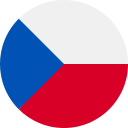Přírodní Vědy SAT - Biochemie a buněčná struktura
Zde se naučíte některá anglická slova související s biochemií a buněčnou strukturou, jako jsou "lipid", "enzym" a "tkáň", která budete potřebovat k úspěšnému složení SAT.
Revize
Kartičky
Pravopis
Kvíz

a substance found in the cell walls of plants, providing structure and making up dietary fiber

celulóza, vláknina
a natural sugar found in fruits and honey, often used to sweeten foods and drinks

fruktóza, ovocný cukr
a basic kind of sugar that is a component of carbohydrates and provides energy for many living organisms

glukóza
a short chain of amino acids linked together, which can function as a building block for proteins or act as a signaling molecule in the body

peptid, krátký řetězec aminokyselin
a type of pigment found in plants, algae, and some bacteria, responsible for bright red, yellow, and orange colors and important for photosynthesis and antioxidant activity

karotenoid, karotenoidní pigment
a substance that all living organisms produce that brings about a chemical reaction without being altered itself

enzym
the entire set of proteins expressed by a cell, tissue, or organism at a specific time under defined conditions

proteom, celá sada proteinů
a molecule that forms the basic building block of DNA and RNA, consisting of a sugar, a phosphate group, and a nitrogenous base

nukleotid
a simple sugar molecule, the most basic form of carbohydrates that cannot be further hydrolyzed

monosacharid
a fundamental compound derived from glutamic acid, integral to biological functions and known for its role as a neurotransmitter in the central nervous system

glutamát, základní sloučenina odvozená od kyseliny glutamové
a substance, such as vitamin E, that helps clean the body of harmful substances

antioxidant
any of a class of organic substances that do not dissolve in water that include many natural oils, waxes, and steroids

lipid, tuk
a specialized, membrane-bound structure within a cell that performs specific functions, contributing to the cell's overall structure and function

organela, buněčná organela
relating to or characteristic of mitochondria, which are organelles found in cells responsible for energy production

mitochondriální, týkající se mitochondrií
the gel-like, semifluid substance within a cell that surrounds the organelles, providing a medium for cellular activities, including metabolism, transport of substances, and support for cellular structures

cytoplazma, cytoplazmatická látka
a green pigment found in all green plants and cyanobacteria that is responsible for the absorption of the sunlight needed for the photosynthesis process

chlorofyl, zelený pigment
a thin sheet of tissue that separates or covers the inner parts of an organism

membrána, blána
a group of cells in the body of living things, forming their different parts

tkáň, buněčná tkáň
a cellular organelle involved in the processing, packaging, and distribution of proteins and lipids within the cell, consisting of a stack of flattened membrane sacs called cisternae

Golgiho aparát, Golgiho komplex
a tiny structure within cells that assembles proteins by reading the genetic instructions carried by messenger RNA

ribozom
a small, enzyme-filled sac in a cell that breaks down waste materials and unwanted substances

lyzozom, enzymy naplněný váček
a cell organelle in plants, fungi, and some protists that stores nutrients, manages waste, and helps maintain cell pressure

vakuola, vezikula
(biology) the part of a cell that contains most of the genetic information

jádro, nukleus
a plant cell organelle that uses sunlight to produce energy and make glucose through photosynthesis

chloroplast, fotosyntetický organel
a network of protein fibers in a cell that gives it shape, supports its structure, and aids in movement

cytoskelet, buněčná kostra
a branch of biology concerning the scientific study of the form and structure of an organism including plants and animals

morfologie, vědecké studium formy a struktury organismů
a layer of actively dividing cells in plants, responsible for secondary growth by producing new xylem and phloem tissues

kambium, dělivé pletivo
| Přírodní Vědy SAT |
|---|